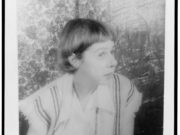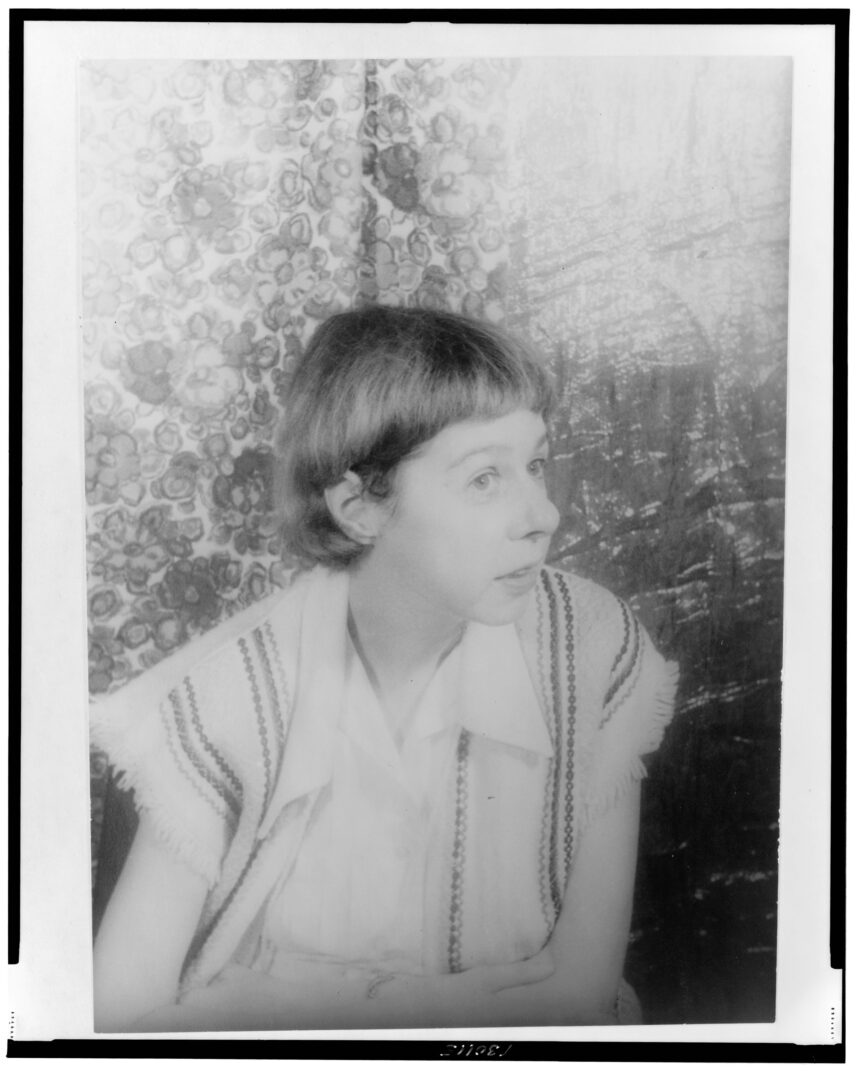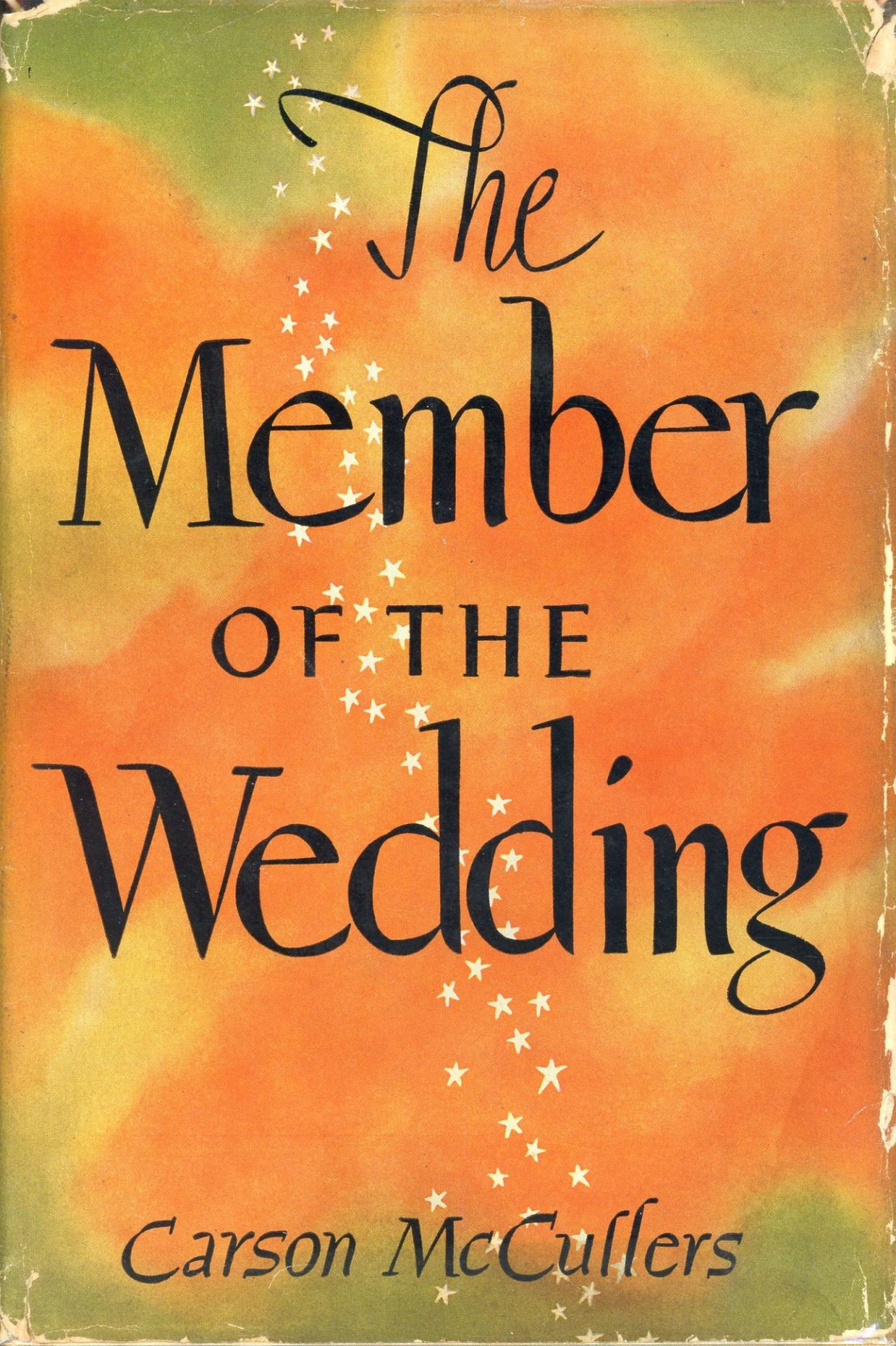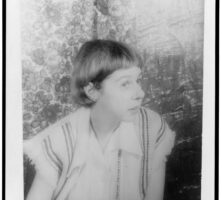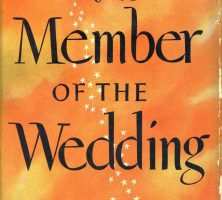With a collection of work including five novels, two plays, twenty short stories, more than two dozen nonfiction pieces, a book of children’s verse, a small number of poems, and an unfinished autobiography, Carson McCullers is considered to be among the most significant American writers of the twentieth century. She is best known for her novels The Heart Is a Lonely Hunter, The Ballad of the Sad Cafe, Reflections in a Golden Eye, and The Member of the Wedding, all published between 1940 and 1946. At least four of her works have been made into films.
Early Life and Education
Born Lula Carson Smith on February 19, 1917, in Columbus, McCullers was the daughter of Lamar Smith, a jewelry store owner, and Vera Marguerite Waters. Lula Carson, as she was called until age fourteen, attended public schools and graduated from Columbus High School at sixteen. An unremarkable student, she preferred the more solitary study of the piano. Encouraged by her mother, who was convinced that her daughter was destined for greatness, McCullers began formal piano study at age ten. She was forced to give up her dream of a career as a concert pianist after rheumatic fever left her without the stamina for the rigors of practice or a concert career. While recuperating from this illness, McCullers began to read voraciously and to consider writing as a vocation.
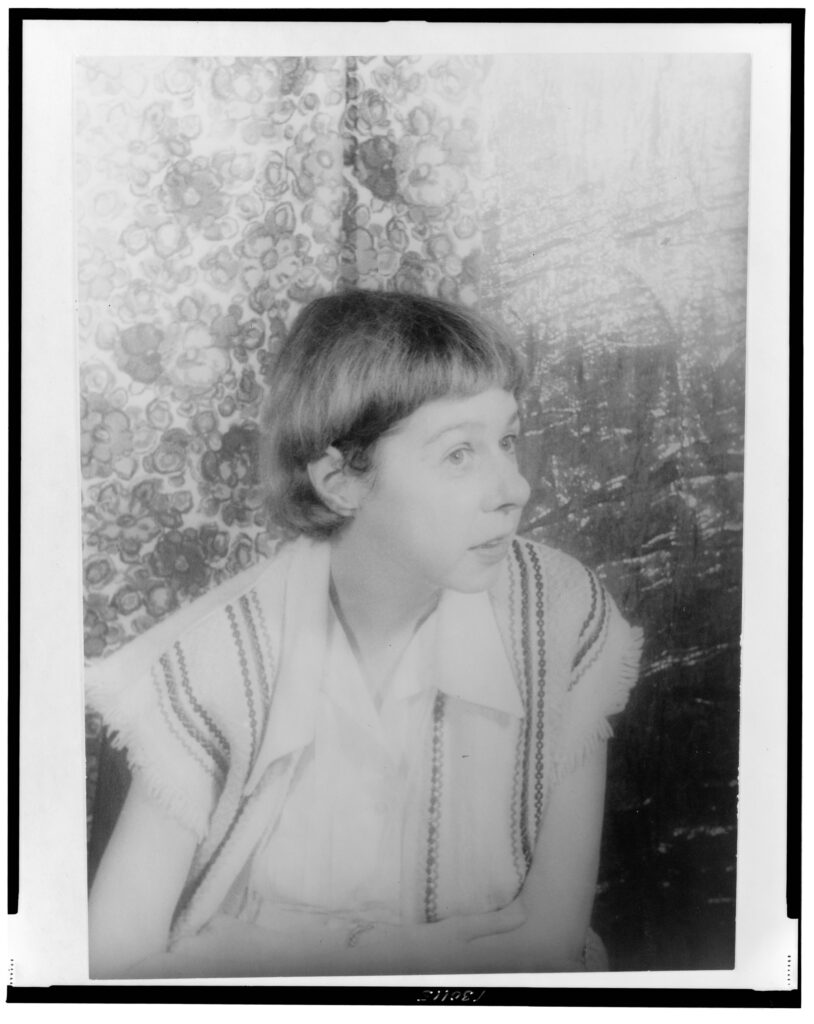
Courtesy of Library of Congress, Prints and Photographs Division
In 1934, at age seventeen, McCullers sailed from Savannah to New York City, ostensibly to study piano at the Juilliard School of Music but actually to pursue her secret ambition to write. Working various jobs to support herself, she studied creative writing at New York’s Columbia University and at Washington Square College of New York University. Back in Columbus in the fall of 1936 to recover from a respiratory infection, McCullers was bedridden several months, during which time she began work on her first novel, The Heart Is a Lonely Hunter. Her first short story, “Wunderkind,” was published in the December 1936 issue of Story magazine, edited by Whit Burnett, her former teacher at Columbia.
Marriage and New York
In September 1937 she married James Reeves McCullers Jr., a native of Wetumpka, Alabama, whom she met when Reeves was in the army stationed at Fort Benning (now Fort Moore), near her hometown. From the beginning the marriage was plagued by alcoholism, sexual ambivalence (both were bisexual), and Reeves’s envy of McCullers’s writing abilities. Moving to New York in 1940 when The Heart Is a Lonely Hunter was published, McCullers and Reeves divorced in 1941, only to reconcile and remarry in 1945.
During a separation from Reeves in 1940, McCullers moved into a house in Brooklyn Heights rented by George Davis (literary editor of Harper’s Bazaar) and shared with the British poet W. H. Auden. This house, located at 7 Middagh Street, became the center of a bohemian literary and artistic constellation including Gypsy Rose Lee, Benjamin Britten, Peter Pears, Richard Wright, and Oliver Smith. In spring 1941 McCullers and Reeves, who were temporarily reconciled, both fell in love with the American composer David Diamond. This complicated love triangle led to a second separation and found expression in the love-triangle theme found in McCullers’s short novel The Ballad of the Sad Cafe and her novel and play The Member of the Wedding. Following her father’s sudden death in August 1944, McCullers moved with her mother and sister to Nyack, New York, where Mrs. Smith purchased a house. McCullers spent most of the rest of her life in this house on the Hudson River.
While living near Paris, France, in the early 1950s, Reeves tried to convince McCullers to commit suicide with him. Fearing for her life, she fled to the United States. Remaining behind, Reeves committed suicide in a Paris hotel room in November 1953.
Early Career
In April 1938 Carson McCullers submitted an outline and six chapters of The Heart Is a Lonely Hunter to Houghton Mifflin and was offered a contract and $500 advance. The book was published in June 1940. The story of a deaf-mute to whom the lonely and isolated people of a southern town turn for silent solace, the novel includes the themes of loneliness and isolation that recur in much of McCullers’s work. It was an immediate success. Rose Feld’s book review in the New York Times was typical of the positive critical response: “No matter what the age of its author, 'The Heart Is a Lonely Hunter’ would be a remarkable book. When one reads that Carson McCullers is a girl of 22 it becomes more than that. Maturity does not cover the quality of her work. It is something beyond that, something more akin to the vocation of pain to which a great poet is born.”
Reflections in a Golden Eye, McCullers’s second novel, first appeared in Harper’s Bazaar in October and November 1940 and was published in book form by Houghton Mifflin in 1941. Readers who expected a book like the author’s first novel were shocked by the troubling story of voyeurism, obsession, repressed homosexuality, and infidelity set on a peacetime army base. Reflections in a Golden Eye received a mixed critical reception, and its author faced ridicule from the people of her hometown who saw negative reflections of themselves in the maladjusted characters of the novel.
Rise to Fame
During the years 1943 to 1950 McCullers published what many consider her finest creative work. The Ballad of the Sad Cafe, set in a small southern town, is the lyrical story of jealousy and obsession in a triangular love relationship involving an amazon-like Miss Amelia, a hunchbacked dwarf, Cousin Lymon, and an ex-convict, Marvin Macy. It appeared in the August 1943 issue of Harper’s Bazaar. The work was later published by Houghton Mifflin in an omnibus edition of the author’s work, “The Ballad of the Sad Cafe”: The Novels and Stories of Carson McCullers (1951).
March 1946 saw the publication of McCullers’s fourth major work, The Member of the Wedding, the story of a lonely adolescent girl, Frankie Addams, who wants to find her “we of me” by joining with her older brother and his bride. McCullers’s theatrical adaptation of the novel opened on Broadway in 1950 to near-unanimous acclaim and enjoyed a run of 501 performances. This adaptation proved to be her most commercially successful work. It was critically successful as well, winning the 1950 New York Drama Critics Circle Award for best American play of the season and the Donaldson Award for best play and best first play by an author.
Final Work
During the final fifteen years of her life, McCullers experienced a marked decline in health and creative abilities. Bedridden by paralysis from a series of debilitating strokes, she was devastated by the failure of her second play, The Square Root of Wonderful, which closed after only forty-five performances on Broadway in 1957, and the mixed reception of her final novel, Clock Without Hands (1961). Her final book-length publication was a volume of children’s verse, Sweet as a Pickle and Clean as a Pig (1964). At the time of her death she was at work on an autobiography, “Illumination and Night Glare.” A more encouraging event in her final years was the success of Edward Albee’s 1963 adaptation of The Ballad of the Sad Cafe, which enjoyed a Broadway run of 123 performances. On August 15, 1967, she suffered her final cerebral stroke. Comatose for forty-six days, she died in the Nyack Hospital and was buried in Nyack’s Oak Hill Cemetery on the banks of the Hudson River.
Legacy
Assessing McCullers’s stature in American arts and letters, biographer Virginia Spencer Carr wrote: “Critics continue to compare and contrast McCullers with Eudora Welty, Flannery O’Connor, and Katherine Anne Porter, whom they generally consider to be better stylists in the short form than McCullers. Yet they tend to rank McCullers above her female contemporaries as a novelist. McCullers herself had a keen appreciation of her own work without regard to the sex of those with whom she was compared.” In an appraisal of her life and work accompanying McCullers’s front-page obituary in the September 30, 1967, New York Times, Eliot Fremont-Smith wrote of the impact of The Heart Is a Lonely Hunter in what could also be an assessment of McCullers’s lasting influence:
It is not so much that the novel paved the way for what became the American Southern gothic genre, but that it at once encompassed it and went beyond it…. The heart of this remarkable, still powerful book is perhaps best conveyed by its title, with its sense of intensity, concision and mystery, with its terrible juxtaposition of love and aloneness, whose relation was Mrs. McCullers’s constant subject…. Mrs. McCullers was neither prolific nor varying in her theme…. This is no fault or tragedy: to some artists a vision is given only once. And a corollary: only an artist can make others subject to the vision’s force. Mrs. McCullers was an artist. She was also in her person, an inspiration and example for other artists who grew close to her. Her books, and particularly “The Heart,” will live; she will be missed.
In addition to the New York Drama Critics Circle and Donaldson awards for her play The Member of the Wedding, McCullers also received two Guggenheim fellowships (1942, 1946), an Arts and Letters Grant from the American Academy of Arts and Letters and the National Institute of Arts and Letters (1943), and various other awards and honors. She was inducted into the National Institute of Arts and Letters in 1952 and Georgia Women of Achievement in 1994. In 2000 she was inducted as a charter member into the Georgia Writers Hall of Fame.
In 2017, in celebration of the centenary of McCullers’s birth, Columbus residents held a series of events, including a viewing of a film adaptation of her short story “A Tree. A Rock. A Cloud.” and multiple guest lectures from literary critics. Columbus State University also asked all of its incoming first-year students to read The Heart is a Lonely Hunter.


